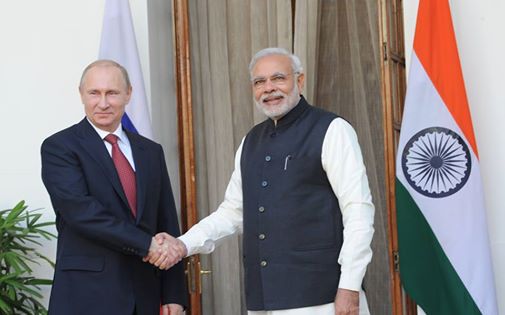Kenan AĞAZADE
Putin to discuss initiatives in development of Russian-Indian relations with Modi and earlier, it was reported that the Russian President will visit India on December 6.
A core element of India’s Indo-Pacific strategy is economic, in particular identifying and expanding cross-cutting sectors that allow India to displace China while creating regional security. Two of those sectors are energy and infrastructure.
The exacerbation of U.S.-Chinese naval rivalry, as well as the threat of destabilization in the South China Sea and around border zone in Tibet, jeopardizes the security through which India receive also energy resources, food, and other vital supplies.
India has shown keen interest in developing a regional security dialogue for many years with other powers. The Russian and Indian defense ministers met in a two-plus-two format. Following a break related to the Ukraine crisis, two-plus-two meetings were resumed in 2017, and a total of four such consultations were held before the outbreak of the new coronavirus pandemic.
The desire for a regional security dialogue is natural for two large and influential states and both of them are great nuclear powers. Furthermore, gradual destabilization and growing military tensions in the South Asia increase the importance of such dialogue, despite existing complications and limitations.
However, the Russian collaboration with India put additional stress on relations with China. The Russian President Vladimir Putin states that Russia would like to develop relations with all states, but would not do anything that contradicts its own interests.
China has questioned the growing Russian military collaboration with India during the two-plus-two consultations and other talks. However, Russia appears to presume that these actions will not have a lasting impact on its relations with China.
In addition to wanting to demonstrate its resolute stance, Russia may be motivated to grow its presence in the South Asia due to its continued standoff with the United States and the overall increase in tensions in the region. It is possible that Russia is envisaging and preparing for hostile actions that comes not so much from China as from the United States.
Moscow and Washington extended the New Strategic Arms Reduction Treaty (New START) for another five years in the first weeks of Joe Biden’s presidency. However, this extension may have only delayed and not averted the disintegration of the existing arms control system. In addition to traditional challenges in U.S.-Russian arms control negotiations, new ones may arise. For example, China’s potential ascent to the position of a third nuclear superpower requires a new approach to ensuring strategic stability.
Following the collapse of the Intermediate-Range Nuclear Forces (INF) Treaty, the possible deployment of intermediate-range missiles is a topic of great concern. U.S. withdrawal from the treaty was accompanied by statements from Trump administration officials about plans of deployment of the intermediate-range cruise and ballistic missiles in the Indo-Pacific region. The Biden administration has not clarified its position on such deployment, but the first steps toward pulling out from the treaty and developing these missile systems were made under the Obama administration, and the implementation of these plans may continue.
Russian officials, including President Putin, have repeatedly stated that although Russia started to develop intermediate-range missiles following the termination of the INF Treaty, it would not deploy them; however, it would react in a timely manner to the deployment of such missiles near its borders. Statements by Russian officials suggest that Russia may deploy missiles to regions where corresponding U.S. missiles are placed.
India, along with South Korea and Australia, has been mentioned as a possible ally for U.S. against China. Even though U.S. intermediate-range missiles in the South Asia would be a much bigger threat to both China and India than to Russia, Moscow would not stand idly by if the United States deployed missiles in the South Asia. Moscow wants also to increase its presence in India and reminds the Indian elite that they should not openly play with U.S. and Russia is ready also to protect and organize the defence for India
India’s new production of more and more advanced weapons systems also makes it important to address new military technologies in Asia. Among other projects, India is reported to have two programs to develop hypersonic cruise missiles and the intercontinental ballistic missiles with a hyper-velocity gliding projectile.
Finally, the South Asia has become center stage for great power competition. Countries with interests in the region—China, Russia, the United States, India, and United Kingdom—are the main participants in today’s advanced military technologies race. Moscow’s communication channels with Washington may be disrupted, but its channels with Chinese always remain open, and this also holds growing importance for the dialogue. It will remain critical for China, India and Russia to exchange information in order to develop an optimal course in the new conditions. As the destabilization of the Indo-Pacific region continues and disagreements between key players escalate, the Russian-Indian security cooperation may acquire growing significance.

